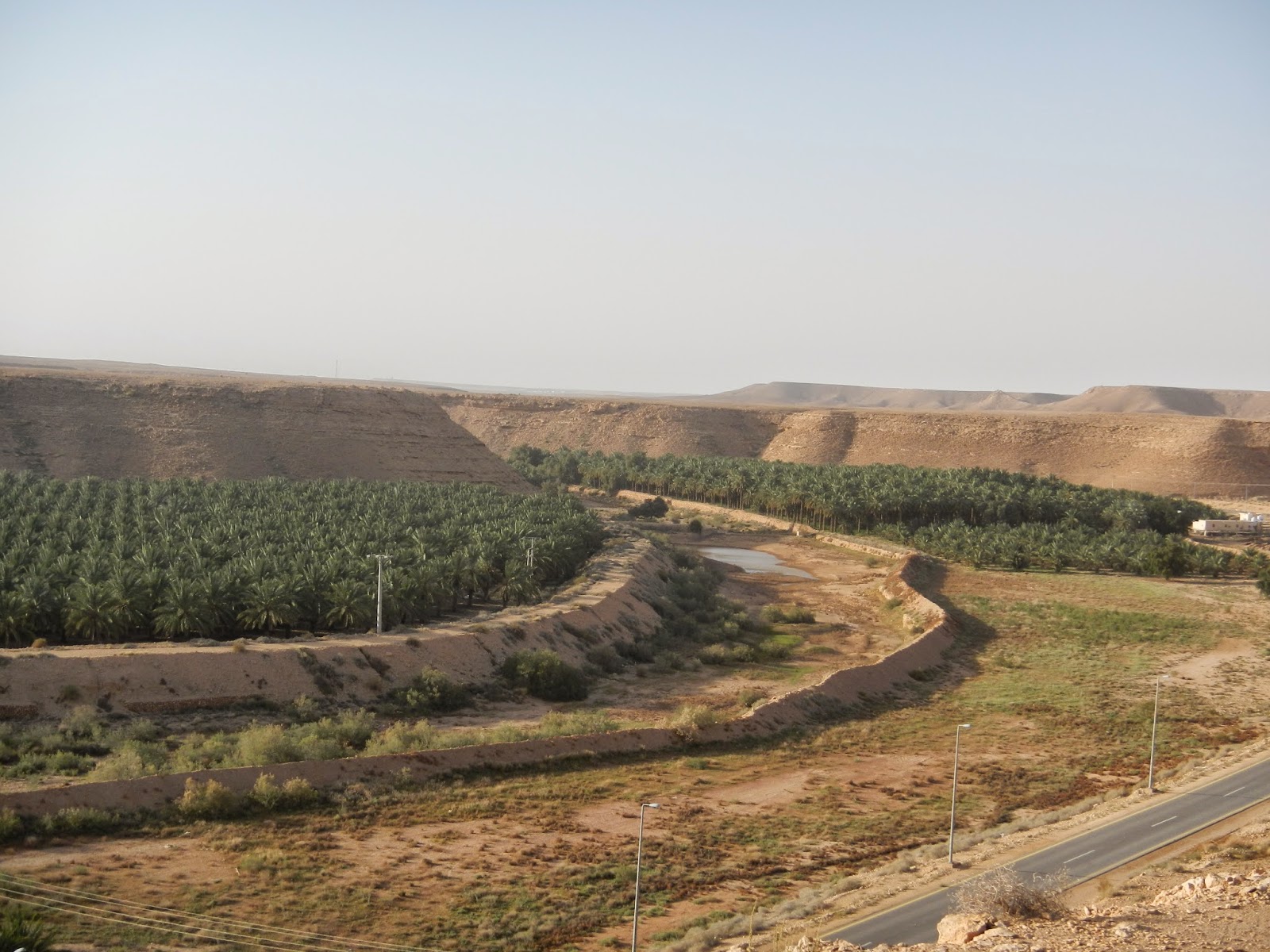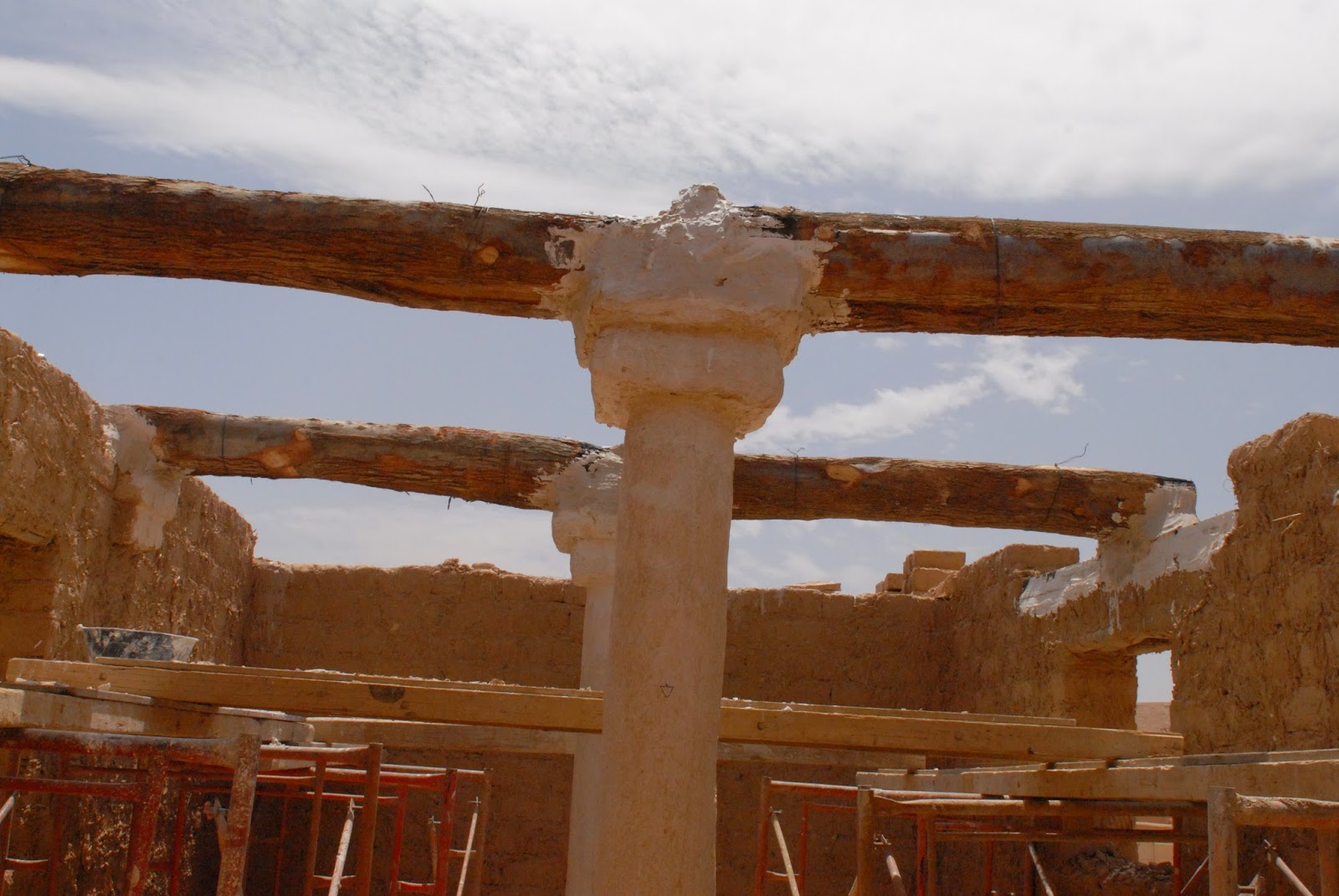By Dr. Joris D. Kila
Heritage Researcher, Lt. Col. (retired), International Military Cultural Resources Working Group and Senior Researcher, Centre for Cultural Heritage Protection, University of Vienna
The Hague, Netherlands
The world’s shared cultural heritage is under threat. Substantial damage has already been inflicted during armed conflicts that have taken place or are still ongoing, especially in parts of Africa and the Middle East. To protect the world's heritage, it is important to gain knowledge about key concepts and mechanisms that underpin heritage destruction and protection including new phenomena, stakeholders and concepts such as
urbicide (a term which literally translates as "violence against the city."), the military roll in heritage destruction and or preservation and the psychological warfare of heritage destruction.
 |
Libya Appolonia artifacts hidden during the revolution November 2011
(c) photo Joris Kila |
‘Cultural property’ that is, the legal term used to describe the world's cultural heritage, is currently not only threatened by time, nature, and man-made development, but increasingly by armed conflicts and upheavals. In this context we see the return of iconoclasm driven and legitimised as an excuse for eliminating perceptions of heresy as well as the ‘’recycling’’ of antique monuments originally built as defence works like the
Crusader castle, Krak de Chevaliers, Palmyra’s Fakhr-al-Din al-Ma'ani Castle or
the now destroyed Temple of Bel in Palmyra which the Burids transformed into a citadel in 1132.
But Iconoclasm is not only directed at immovable heritage, it also aimed at written heritage making manuscripts and books equally at risk. The majority of today's warring parties are guilty of abuse and destruction whether intentionally or by accident, disregarding that cultural property is ‘’protected’’ under (inter)national laws. To make matters worse there has been an increase in the looting and illicit traffic of artefacts, the revenues of which are used to finance, and thus extend conflicts.
 |
A museum guard displays a manuscript burnt by fleeing occupation forces
at the Ahmed Baba Institute in Mali.
Photograph: Benoit Tessier/Reuters © The Guardian |
There is a distinction between material and non-material heritage. Materials are, for instance, sculptures and paintings but also libraries, archives, monuments and archaeological sites. Immaterial, also referred to as intangible heritage, includes languages, national anthems, and historic traditions. All heritage is strongly connected with identities and therefore potentially politically and socially sensitive especially in connection with conflict and disputes.
Within this framework, written heritage has a dual status: libraries, archives and manuscripts are material cultural properties but simultaneously carriers of intangible heritage like ideas and by extension, identity. Dualism can be seen too in overlaps between cultural and natural heritage, such as cultural landscapes like Ayers Rock and in ivory that is often smuggled.
In general terms books and documents can be considered to be containers of identity. Simultaneously the material manifestation of a book or manuscript can be an artifact or a sacred and thus religiously sensitive object. Specifically, archives can contain cultural heritage for a national society or smaller community as well as information that makes them strategic targets for the warring parties e.g. working archives can hold tactical information about persons and political issues. Military experts connect this information with military intelligence. Additionally, libraries and archives themselves can be historic monuments.
Apart from the fragile characteristics there are many more issues within the realms of heritage. They include shifting insights on conservation, restoration, authentication (forgeries) and developments concerning digitization, manipulation, political propaganda, illicit trafficking, and legislation. Current attacks on cultural heritage show elements of psychological warfare, cultural genocide and, as acknowledged by the United Nations, war crimes.
This makes Cultural Property Protection (CPP) a complicated multi-disciplinary topic with stakeholders that include the military, police, diplomats, legal specialists, auctioneers, antique dealers, and religious experts to name a few, all of which represent and defend their own interests. Transnational crime is also present, not to mention collateral damage inflicted during battle.
Considering the complexity and the seriousness of today’s heritage conditions it seems fair to acknowledge that safeguarding issues cannot be taken care of by only as small number of cultural experts or enthusiasts who are not afraid to be pro-active and often need to act as private individuals. The main concern is that there is presently no operational protection concept being implemented based on international cooperation and coordination. Legal obligations and sanctions are not sufficiently implemented and enforced – for instance, some cultural war crimes could and should be prosecuted by the International Criminal Court.
Although there are moral and legal obligations, funding is not in place for CPP training, education, research, and the deployment of ‘’new’’ stakeholders like the military who are equipped to operate in war zones. Most contemporary asymmetric conflicts in which (written) heritage is endangered take place in the Muslim World. A lot of the world’s heritage from antiquity is located there but it is also critical to pay special attention to protection and restoration of Islamic heritage before the cultural and historical memory rooted in these regions is erased from the world’s common consciousness and lost to future generations.
To meet some of these challenges, the
Islamic Manuscript Association in partnership with
the Royal United Services Institute (RUSI) has organised a course this coming October entitled
Manuscript Collections in Conflict Zones: Safeguarding Written Heritage. This multidisciplinary course will also gives a general introduction about Cultural Property Protection and destruction in the event of conflict. The course will take place October 5th, 6th, and 7th at the Royal United Services Institute in Whitehall, London.
Confirmed speakers include:
Colonel Matthew Bogdanos,
Assistant District Attorney in Manhattan
Mr. Marco Di Bella,
Freelance Book and Manuscript Conservator and UNESCO Consultant
Mr. Karl von Habsburg-Lothringen,
President of the Association of National Committees of the Blue Shield
Dr. Joris Kila, Chairman,
International Military Cultural Resources Working Group
Professor Roger O’Keefe,
Chair of Public International Law, University College London
Mr András Riedlmayer,
Bibliographer in Islamic Art and Architecture, Harvard University
Professor Franck Salameh,
Associate Professor of Near Eastern Studies, Boston College
Dr Christos Tsirogiannis,
Research Assistant, Trafficking Culture Team, University of Glasgow
Dr Hafed Walda,
(Pending) Deputy Ambassador to the permanent Libyan delegation at UNESCO
Dr James Zeidler,
Associate Director for Cultural Resources, Colorado State University
For information about course lecturers and how to register to attend, please contact the Islamic Manuscript Association linked
here.
 armed conflict,cultural preservation,Events and Conferences,historical documents
armed conflict,cultural preservation,Events and Conferences,historical documents
 No comments
No comments
 armed conflict,cultural preservation,Events and Conferences,historical documents
armed conflict,cultural preservation,Events and Conferences,historical documents
 No comments
No comments

























